Paver or paving block is not merely a soil coating material. Pavers are a type of precast concrete that has various shapes and sizes for practical flooring. This concrete is flexible for use, such as for designing a backyard garden, a parking lot, and a sidewalk.
This article discusses various types and sizes of pavers commonly used for various building projects, starting from brick shape to hexagonal shape. Read also the tips to choose the right size and type for your project below!
Various Types of Pavers for the House
You need to understand various types of pavers before determining the size. Every type of paver has unique characteristics affecting the function and aesthetic of the area. Here are some types and sizes of pavers you should know:
1. Brick Pavers
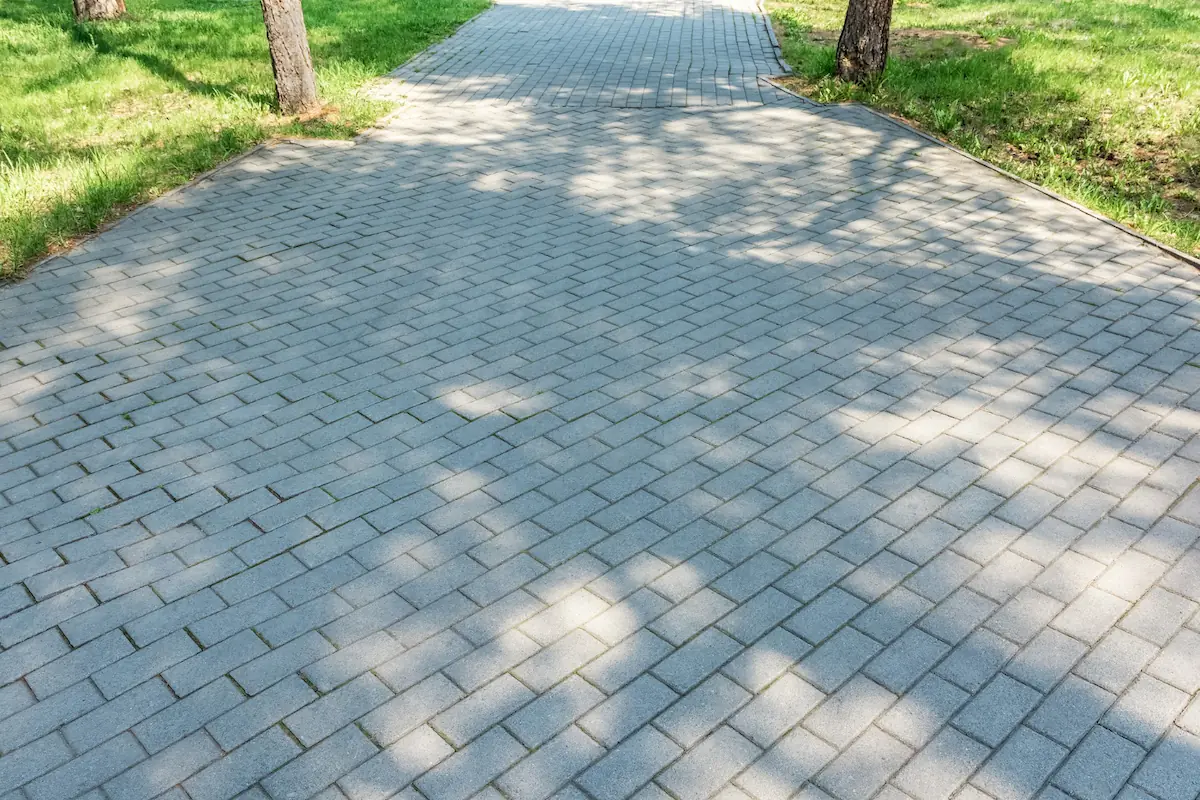
Brick pavers are the most common paving blocks used in many construction projects. The size is 21 x 10.5 cm. This paver is popular for its simple shape and flexible laying. You can create a zig-zag, straight, herringbone, and circular pattern. This type of paving block is available in thicknesses of 6, 8, and 10 cm.
2. Square Pavers

As the name suggests, square pavers have a square shape that makes it easier to stack, compared to brick paving blocks. The size of this paver is around 21 x 21 cm or 10.5 x 10.5 cm. It is also often used in areas with heavy loads, such as garages and residential complexes.
3. Grass Block
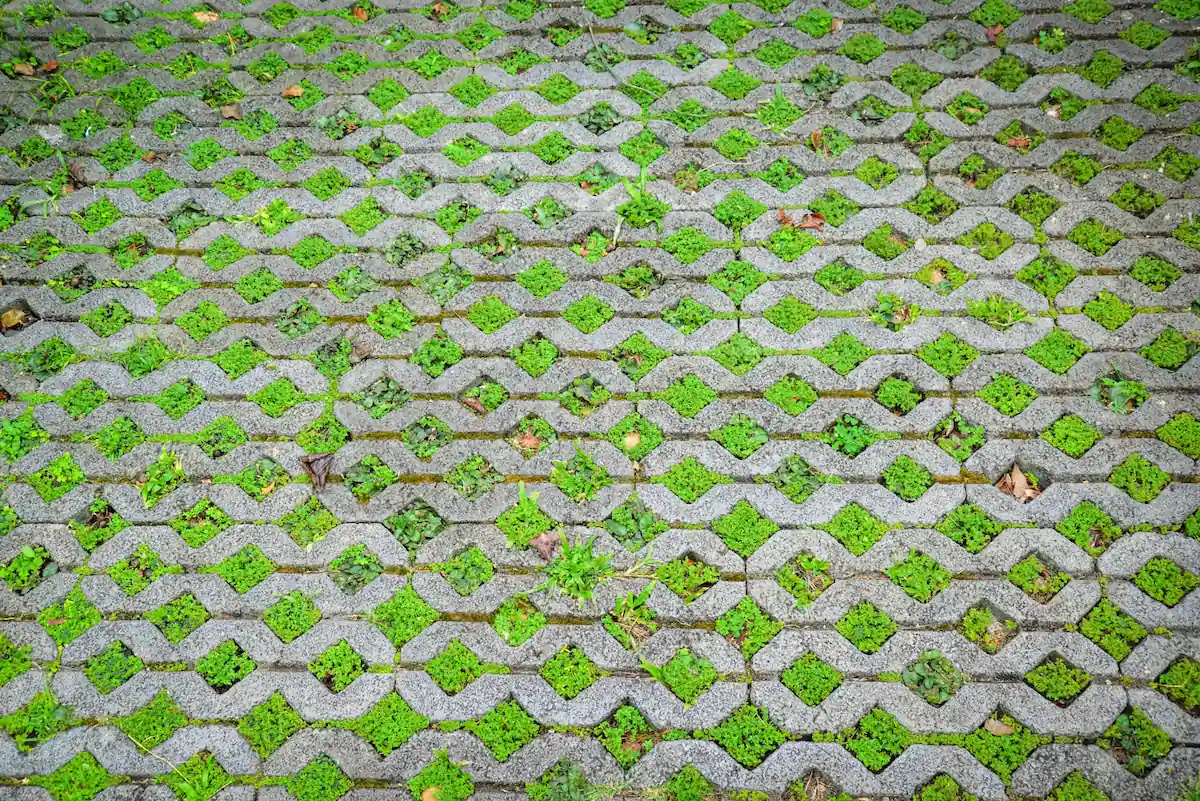
A grass block is a paver having holes for grass planting. It has various sizes, but it usually has a dimension of 40 cm x 40 cm with 5 holes. Grass block is suitable for water infiltration areas, such as a garden, a green parking lot, or a front yard.
4. Hexagonal Paving Block
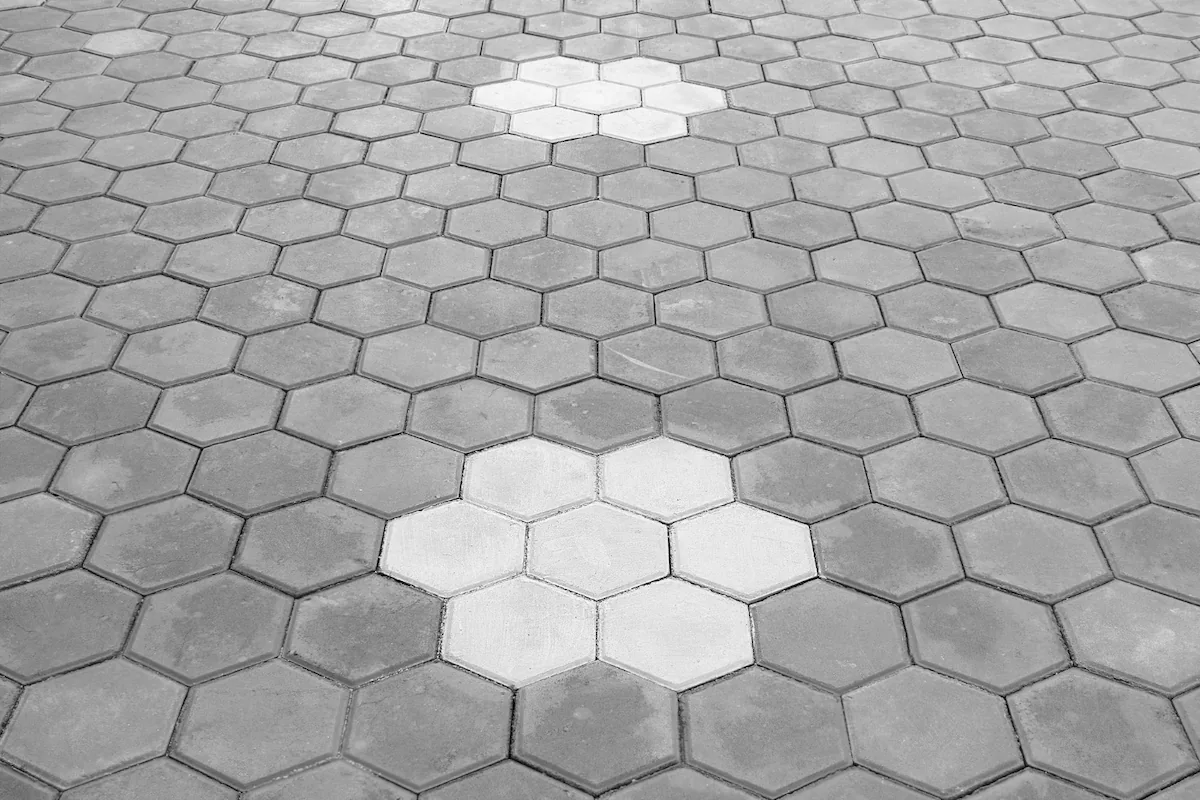
Hexagonal paving block has 6 sides that appear unique compared to other types. It usually has a size of 20 cm x 10.5 cm. Due to its particular shape, the paver is widely used for sidewalks, residential roads, and front yards to be more attractive.
5. Trihex Pavers
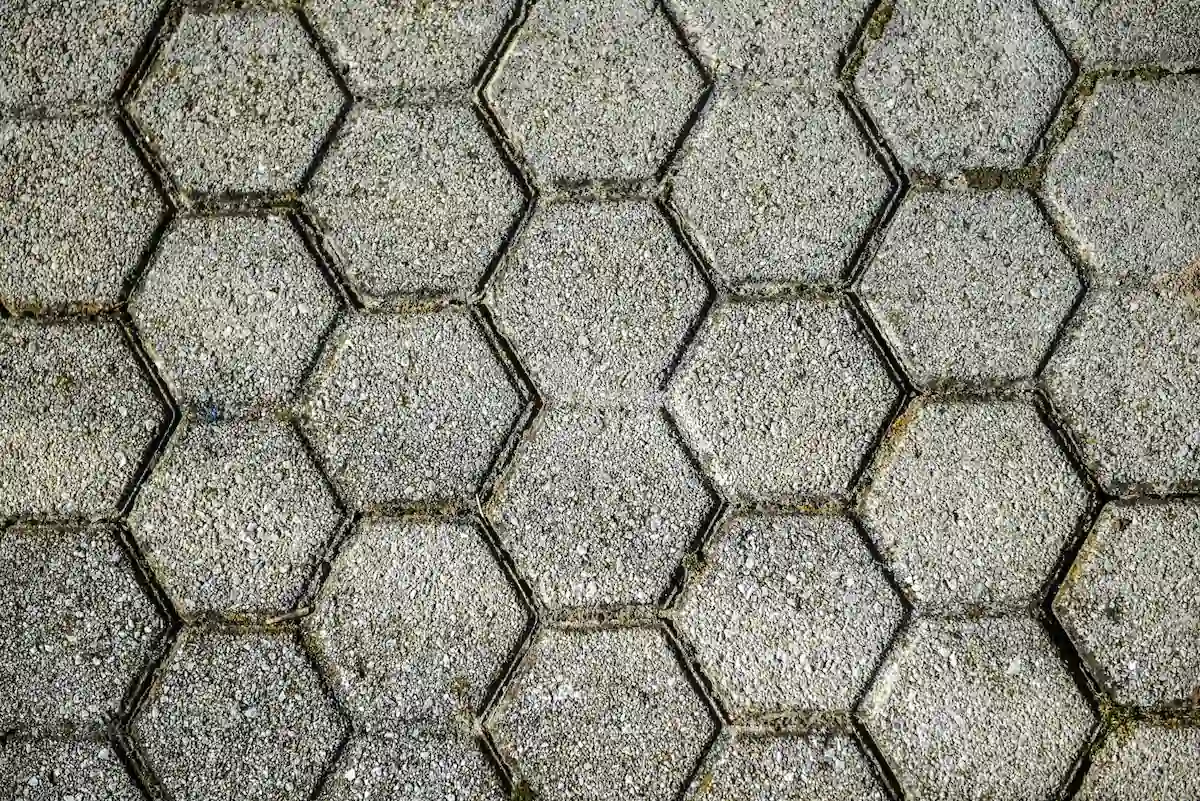
Trihex paver is a hexagonal paving block stacked into three complete parts, just like a triangle. You can save more casting mixture when you use trihex pavers. In addition, paving this block is considered faster than the others.
6. Worm Paving Blocks
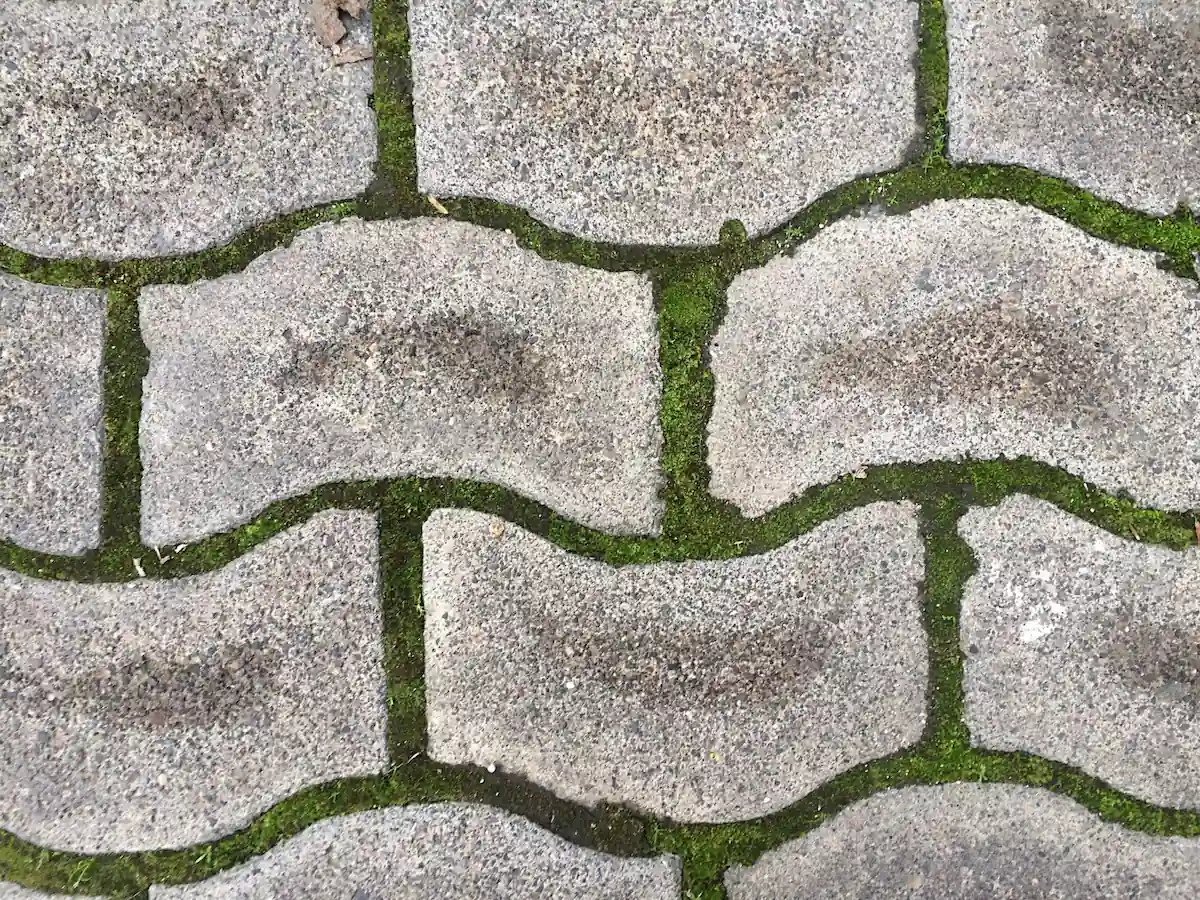
Worm pavers have a curved shape that strengthens the bond between each block. The size is typically 21 x 10.5 cm. It is frequently used in high-traffic areas, such as residential roads and sidewalks, because the structure is stronger and more friction-resistant.
Read also: Concrete Rebate: Definition, Functions, and Advantages
How to Choose the Types and Sizes of Pavers
Now that you already understand the types of pavers, you should determine the size according to your project needs. Areas with heavy and dense traffic usually require thicker paving blocks. Here are some tips you can apply when choosing pavers.
1. Measure the Area
Before determining the pavers' size, you should measure the area accurately. The area will affect the number and type of blocks you need. For a wider area, you can choose bigger pavers to make it efficient and faster to pave. In this regard, trihex pavers can be a solution.
2. Match the Goal
To choose the right pavers, you should match them with the goals of paving. If you are going to pave the area for heavy vehicles, you can choose thicker and bigger pavers with great durability. Meanwhile, for the house yard, you can choose smaller and more unique pavers.
You can also choose a grass block to let the grass grow in between. That way, the environment will look greener. In addition, large grass block holes allow water to pass through, making the block stay during heavy rain.
3. Consider Design and Style
Aside from the function, the design and style are also important to note. You had better choose the color and pattern based on the house concept. A smaller paver usually gives more pattern variation. You can also combine 2 paving blocks to make it more appealing, like mixing brick pavers with worm pavers.
4. Prioritize Function
The beauty of design is essential, and so is the function. You must prioritize the function first. Thus, make sure the pavers you choose can support a heavy load, following the area's needs. For example, for a parking lot and a sidewalk, you can use an 8 cm-thick paving block.
5. Consider Your Budget
Lastly, you must consider your budget before determining the paver size. This is because every paver has a different price depending on the types, sizes, and quality.
If you have a limited budget, you can seek a cost-effective alternative without sacrificing quality. For example, you can use brick pavers, which have a flexible laying and an inexpensive price compared to other types.
Read also: House Renovation Budget: Example & How to Create One
You finally know the size and type of pavers. Remember, in choosing paving blocks, you must prioritize the function over the aesthetic matter. To ensure that the installed paving blocks are useful, make sure you have done thorough planning and chosen the appropriate type and size.
For the public facilities, such as roads, multi-story buildings, bridges, and other infrastructures, make sure to choose a proven and quality material, whether the paving blocks or the concrete.
If you need super-quality ready mix concrete, use Ready Mix Concrete and Precast Concrete by Merah Putih Beton. The ready-mix concrete by Merah Putih Beton is designed for various applications based on the client’s demand. The concrete is ready in many grades for construction.
What are you waiting for? Contact us now to learn more about our precast concrete and ready-mix concrete for culvert, bridge, and multi-story building construction. Always use the best material in every construction project with Semen Merah Putih!
Read also: Precast Concrete: Definition, Functions, and Types



